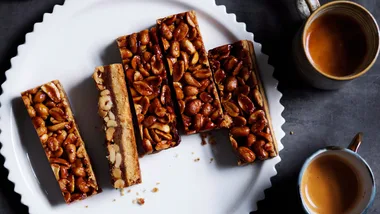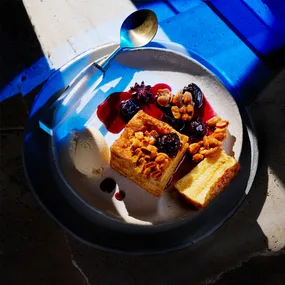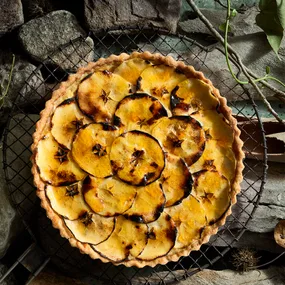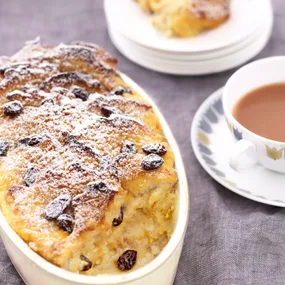If you love Christmas baking, take the best-quality butter, eggs and fruit and introduce this sweet, fragrant Italian bread to your festive tradition.
Dried and glacé fruit are a common theme when it comes to Christmas sweets and treats from European countries. Think of the dense, booze-soaked fruit cakes, puddings and tarts of English origin, which have been so widely adopted here in Australia, despite our seasonal differences. Or perhaps German stollen, a sweet Christmas bread studded with glacé cherries and dried fruit, sometimes with a luscious marzipan centre but always finished with a generous dusting of icing sugar. The Italians have their own version of a festive bread – panettone, a buttery, lightly sweetened, egg-enriched dough with a distinctive cupola-shaped top, traditionally studded with raisins and candied citron. Visit just about any Italian delicatessen or greengrocer at Christmas time and you’ll find a wide selection of panettone including more modern versions that have been stuffed with chocolate chips or limoncello.
There are almost as many legends attached to the history of panettone as there are versions of the bread. But a common thread is its place and time of origin – Milan, dating back, in one form or another, to the Roman Empire, when ancient Romans sweetened leavened bread with honey. Even the origins of panettone’s name are somewhat mysterious. Some historians claim it derives from the Italian “panetto”, meaning small bread loaf. Conversely, panettone literally means large bread. Or it may have come about at the time of its first recorded association with Christmas, which occurred in the writings of an 18th-century illuminist who referred to it as pane di tono, meaning luxury bread. But it wasn’t until the early 20th century that panettone became widely adopted by Italians as their Christmas bread. This was due to large-scale production by two rival bakers, Angelo Motta and Gioacchino Alemagna. The two family companies were bought out by Nestlé in the late 1990s, and they have since been taken over by the Italian bakery company Bauli.
So, if there’s so much commercially produced panettone out there, why make your own? It’s a labour-intensive and time-consuming process (multiple proving is necessary to ensure a light and airy result)and may not yield a perfect-looking panettone (although this will improve each time you attempt the recipe). But the pay-off is a delicate, preservative-free, top-quality panettone that hasn’t travelled great distances to get to your kitchen table (so no air miles to feel guilty about) and is far fresher than any shop-bought product could ever be.
As always, using the best available produce will ensure the best possible results. Free-range or organic eggs, great-quality butter and premium dried and glacé fruit are essential. Seek out a deep-sided cake tin to achieve the traditional domed shape. These tins are available from specialist cookware stores. Standard round cake tins are about 6cm deep, whereas the tin we’ve used is 10cm deep. If you can’t find such a tin, you can bake the panettone in a larger diameter shallow cake tin. Although it won’t have the same proportions, your panettone will have the same taste and texture.
Enjoy your home-baked panettone warm or at room temperature, with an espresso – or, in true festive spirit, with a glass or two of Moscato d’Asti and topped with honeycream and berries, as we’ve done here. Salute e buon Natale.










